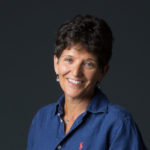Longitude Sound Bytes
Ep 67: Presence in performing arts | Lori Schiff – by Rachel Carlton (Listen)
I am Rachel Carlton, Longitude fellow from Rice University, and today I will be presenting a sound byte by Lori Schiff, an Alexander Technique teacher from the Juilliard School, and she will be speaking to us about presence and learning to be fully conscious in the present moment.

Lori Schiff, Alexander Technique Teacher at the Juilliard School:
Among the things that fascinate me, in this performing arts world and in life, is this quality we call presence. Presence is that fascinating “it” energy that’s so engaging and attractive and magnetic. But what is it? The performer on stage or in film or the speaker in a lecture, who somehow is speaking directly and only to you, but also to everyone else, that person or living being that draws your attention by being themselves, that being has presence, a light, and magnetism. How do they do that? Their own level of engagement and whatever they’re doing is so pure, so genuine, that there’s no mind-chatter interfering with their attention. We’ve all experienced or witnessed this quality, of when a conscious being is enthralled, totally focused. They have presence, they are present. My parrot, when breaking apart a nutshell to get the nut out, is completely present in that moment and action. Yet, if something happens, a sudden loud noise or quick movement nearby, he’s immediately alert to his surroundings and he’s ready to fly. He’s present and he’s open. There’s an open, even vulnerable, quality to someone who’s fully present. Through learning to be at ease and conscious in yourself, through yourself, you learn presence. Choose to be quiet in yourself. Stillness and calm allow you to listen and to observe and to be. By learning consciousness throughout yourself. You can quiet the normal in the extra anxieties that prevent you from being fully present, with others or in life. Our reactions to our own self doubts and inner voices can be paused. Set aside when we stay connected to others through wonder and curiosity. We become increasingly present in the world when we let interest, and curiosity, and amazement, lead our attention. Try it. Remember a time when you were completely involved and occupied with an activity or interest of yours, playing a sport or an instrument. Where were your fears and neuroses? Somewhere else, most likely. Choose to be present in yourself. Feel your contact with the ground, sense your feet on the floor or your other contact points with the chair or while lying down. Things you are literally in touch with. Connect consciously to your environment. Look around. Let sights and sounds and smells come in. You become present and open and then interconnected. Others will sense this and take note. They will.

Rachel Carlton, Longitude fellow, Rice University:
A big thank you to Lori Schiff for her astute reflection on what it really means to be “present.” I’m someone who is guilty of dividing my attention between a million different things at a time, which ultimately means I don’t end up focusing on anything. Even as I’m recording this podcast, it’s hard for me not to start thinking about what else I need to be doing today. But in the moments where I do find myself in that same state of consciousness as a parrot cracking a nutshell, it’s almost like I can feel the extra activation in my brain that allows me to be present. And Lori’s right — there’s something captivating about a person who can be totally present in their work or in their conversations with others. It’s really noticeable. So, I hope to make a more conscious effort going forward in being more present, even if it’s only for a few minutes at a time.
We hope you enjoyed todays segment. Please feel free to share your thoughts over social media and in the comments, or write to us at podcast@longitude.site. We would love to hear from you.
Join us next time for more unique insights on Longitude Sound Bytes.
